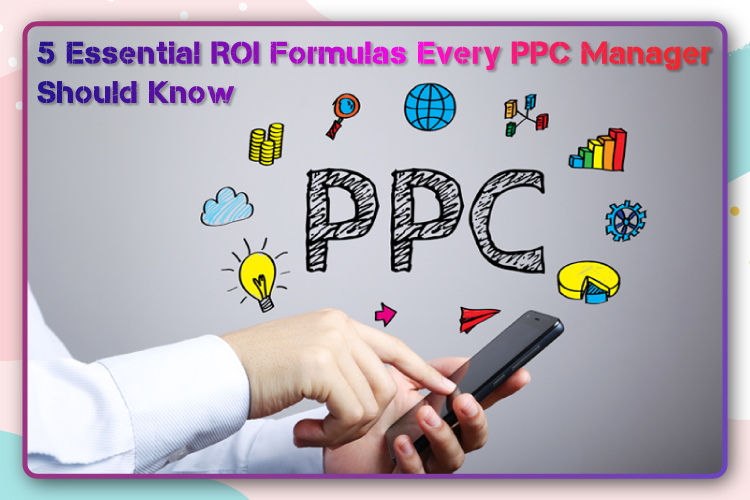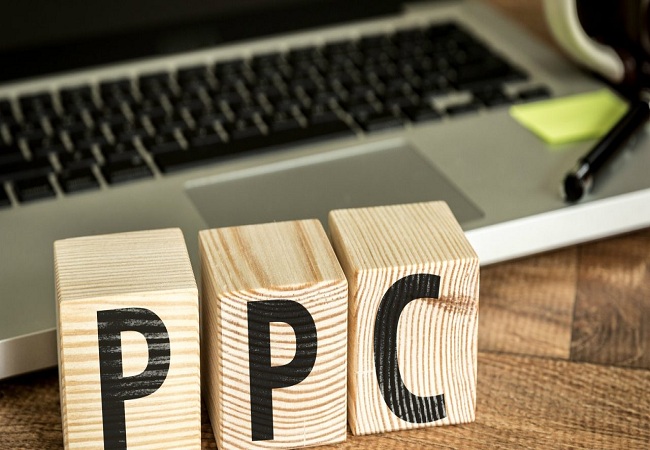

“Am I yielding profit?” – a question that every PPC manager has to answer and a question that most of them struggle to answer.
PPC marketers are not essentially statistics marvels or mathematically aligned by nature, and there can be multiple determinants affecting the overall profitability.
Although understanding Google Ads and its auction process is vital to making your campaigns successful, understanding business’s financial figures are becoming increasingly crucial.
The advertising world is progressing dramatically. PPC is not the only place to put your money anymore. Now there’s Microsoft Ads, social media ads like Facebook Ads, Instagram, Snapchat, and many many more.
Money is divided up to many areas, and there is no magic bullet for ascribing every buck spent. Using a little math as our guiding light is the best we can do.
Whether you are in-house or working with an agency, understanding the financial metrics will help you become a better media buyer and yield better long-term results.
While a few PPC managers might find these calculations intimidating, mastering these will get you miles ahead in the competition in terms of both practice and knowledge.
- Calculating ROAS
Often people confuse ROAS and ROI as the same thing, but actually, they’re not.
The difference between the return on ad spend (ROAS) and return on investment (ROI) is whether or not you are accounting for the company’s profit margin (or cost of doing business).
In ROAS, we look at the PPC profitability in a precise and straightforward way. With it, we get to know if the company made back more money than it spent on the ad.
Meanwhile, in ROI, we look at the PPC spend in an intricate and more complex way. With it, we get to know if we made a profit after accounting for the cost of products/services and marketing.
For example, if you sell dresses for $100 each, your ROAS will use the $100 in its calculation. But let’s assume you have a 50% margin on these dresses, which means your actual profit is only $50. Huge difference!
Usually, media buyers depend on ROAS only due to a lack of availability of internal information to feed in Google Ads for ROI calculation.
Steps to Determine ROAS
What you need:
- Total Conversion Value
- Total Advertising Cost
Formula:
Total Conversion Value/Total Advertising Cost
Note:
Google Ads has a special column for ROAS. But the reason you haven’t come across it yet is that it does not call it ROAS; it is present there as “All Conv. value/cost.” If your ad campaigns are tracking conversion value accurately, this column can come handy to calculate ROAS.
- Calculating Break-Even ROAS
ROAS is useful, but it does not give you the whole profitability picture.
Like you saw in the previous dress example, manufacturing products cost money to the company. And with just ROAS, you don’t exactly know if you are making an overall profit or not.
You can have a client whose ROAS is a whopping 300%, but once you bring the profit margin on the table, you’ll realize that they are going in loss.
As a PPC manager, the first thing you should do is set a break-even ROAS for all your clients.
Now every client has a different way of calculating their profit margin. Like they might or might not include their office rent in it. But to set a break-even ROAS, you need first to calculate a basic profit margin.
Steps to Calculate Break-Even ROAS
What You Need:
- Profit Margin
Formula:
1/Profit Margin
For example, your client is a travel agent who books business class air tickets.
With each ticket booking, he generates an average of $1500 in income.
However, that’s before the customer has paid for the ticket.
Now around 60% of this income goes to the booking cost for the ticket, and 7% of the income is paid to the salesperson as a commission.
Firstly, subtract the actual ticket cost from the revenue i.e., 60% of $1500, which is $900. Subtract $900 from $1500, and the income is now down to $600.
Then, subtract the salespeople’s commission from the revenue, i.e., 7% of $1500, which is $105. Now the revenue is down to $495.
Out of the total income i.e., $1500, your client makes a profit of $495. Basically, your client’s profit margin is 33%.
However, this is not the full picture as this calculation does not include potential expenses such as taxes, rent, etc.
This is just the cost of service.
So to calculate your break-even ROAS, you can simply divide 1/profit margin i.e.
1/.33 = 3.03 or 303%
In a nutshell, you need to make $3.03 on every dollar spent on marketing.
With this, we can also conclude that anything over 303% ROAS means you are making a profit, and if it’s less, you are going in loss.
- Calculating Cost Per Conversions for Forms
Form submissions are tracked as a conversion action in many PPC accounts.
However, ascribing a value per conversion can be tricky since a lot of form submissions don’t mean any profit or revenue for the client, or the amount might dramatically vary.
As a PPC manager, you need to know your true cost per conversion.
Meaning how much you are paying for a form submission that it converts into a deal, sale, or whatever means the company earns from.

Steps to Calculate Cost Per Conversions For Forms
What You Need:
- The average cost per conversion (the cost per form submission)
- Average Form conversion rate (the percentage of forms that convert into sales)
Formula:
The average cost per conversion/Form conversion rate
Let’s continue our previous travel agent example. Here we will be tracking form submissions as conversions.
You know that your average cost per conversion for your Google Ads is $40, and you are closing about 20% of the total forms submitted via Google Ads.
$40 cost per conversion/.20 conversion rate = $200
So, on the basis of your conversion rate of 20%, your true average cost per conversion is $200.
On the basis of this information, we can calculate your ROI.
ROI calculation = (profit-cost)/cost
i.e. [$495 (average profit per conversion as calculated previously) – $200 (true average cost per conversion calculated just now)]/$200 = 1.475
In the essence, you are making $1.475 for every dollar spent on marketing.
- Calculating Break-Even CPA For Forms
Just like ROAS, it’s time to calculate break-even CPA for forms.
In context to the example above, we know that at $200 CPA, we are making a good profit.
But how do we know the “maximum” amount of money we can spend on our Google Ads without going in loss.
At a closing rate of 20%, $40 cost per conversion is profitable for your client.
But if you were generating conversions at $45, would you still be making good money?
There’s only one way to know for sure – calculating break-even CPA for forms.
Steps to Calculate Break-Even CPA For Forms
What You Need:
- Average profit per sale
- Form conversion rate
Formula:
Average profit per sale x Form conversion rate
From the above examples, we found out that the average profit per sale is $200 after deducting the ticket booking cost and commission for salespeople. Similarly, we also know that the form conversion rate is 20%. Putting this information into the formula, we get:
$200 x 0.20 = $40
Meaning, you can spend up to $40 per form submission on average. Spending more than that will lead you to loss.
- Calculating Break-Even CPA For Complex Sales Cycles
Converting visitors into customers is not one straightforward process for all businesses.
Longer sales cycles involve several touchpoints with the prospects before they finally make a purchase or subscribe or download and generate revenue.
For example, let’s assume your client sells monthly subscriptions for cloud-based accounting software for small businesses.
On average, their customer generates $3000 of revenue during their average subscription period.
You design a PPC campaign to navigate traffic to a landing page that promotes a free webinar describing the benefits and features of the company’s accounting software.
However, your PPC conversions tracking goes as far as webinar registrations only. This is where knowing how your sales funnel typically performs becomes essential.
You know that 50% of the total webinar registrants actually attend the free webinar. Out of which 20% ends up taking a subscription for your accounting software.
Now what you need to do is find out the “maximum” amount of money you can spend on webinar registration from your campaigns.
Steps to Calculate Break-Even CPA For Complex Sales Cycles
What You Need:
- Average profit per sale
- Average conversion rate (% of registrants attending the webinar)
- Sales conversion rate (% of attendees who ends up signing up for the subscription)
Formula:
(Average conversion rate x Sales conversion rate) x Average profit per sale
As per the information available in the example above,
(50% x 20%) x $3000 = $300
In essence, your break-even CPA for webinar registration is $300.
Conclusion
Knowing these formulas by heart can go a long way in making you a better media buyer and generating long-term profits. Being able to explain these to your clients might be a bit of a challenge, but when it is clear to you, making them understand wouldn’t be hard. With the formulas, you will be able to get miles ahead of most of the PPC managers. Your knowledge, practice, and dedication to work with your clients to make their business successful will help you build stronger relationships with your clients. Master these formulas, and you will be able to apply them in multiple scenarios for better results.
Hariom Balhara is an inventive person who has been doing intensive research in particular topics and writing blogs and articles for E Global Soft Solutions. E Global Soft Solutions is a digital marketing, seo, smo, ppc and web development company that comes with massive experiences. We specialize in digital marketing, web designing and development, graphic design, and a lot more.
SOURCE : 5 Essential ROI Formulas Every PPC Manager Should Know



























